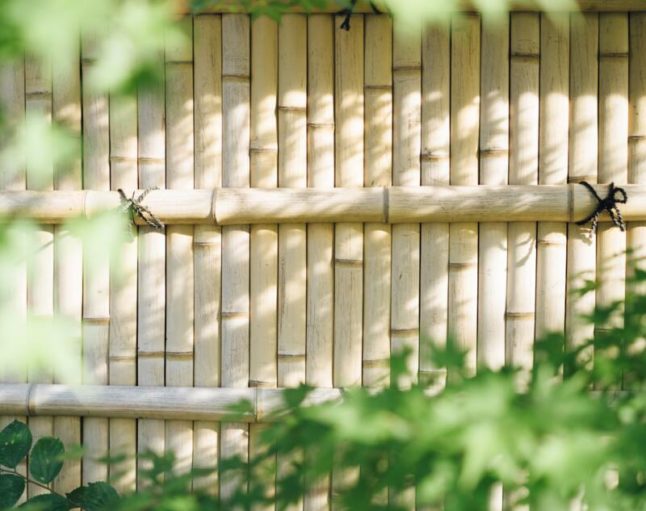Featured

Your fencing is a necessary component of your residential property, offering safety and security, personal privacy, and aesthetic allure. There are several strategies you can implement to protect your fencing and prolong its life.
- Choose the Right Material. The first step in securing your fence from weather-related damages is to select the ideal material for your environment. Some materials are more immune to the elements than others.
Wood Fencings: While typical wooden fences provide a natural, appealing look, they are particularly vulnerable to water damages, insect, and rot invasion. Such as cedar or redwood if you select wood, select pressure-treated lumber or wood kinds that are much more immune to wetness. Vinyl Fences: Vinyl is a low-maintenance choice that stands up to fading, fracturing, and bending. It's likewise immune to rot and parasites, making it optimal for areas with high humidity or exposure to rain. Steel Fencings: Aluminum and functioned iron fencings are sturdy and resistant to weathering. However, they can corrosion if exposed to moisture for prolonged durations. Choose a powder-coated or galvanized metal fence to decrease the risk of corrosion. Compound Fences: These are made from a mix of timber fibers and plastic, supplying the ideal of both globes-- resilience and a natural look. Composite fences are immune to wetness, fading, and deteriorating, making them wonderful for climates with constant rain or snow. 2. Apply Protective Coatings. Despite the material, applying a safety coating can assist protect your fence from weather damages.

Wooden Fences: A good-quality stain or sealer can assist protect your timber fence from moisture, UV rays, and insects. These finishes develop a barrier that avoids water from permeating into the timber and triggering rot. You need to apply a fresh layer of stain or sealer every pair of years, relying on your environment and the level of direct exposure to rain and sunshine. Plastic Fences: Although vinyl fences are generally resistant to weathering, they can still deal with staining due to the sunlight's UV rays. You can use customized vinyl cleansers or UV protectants to maintain the color and look of your fence. Steel Fencings: For steel fences, consider applying a rust-resistant guide and a layer of paint designed for outside use. Powder finishing is one more excellent alternative for steel fencings, as it develops a long lasting, weather-resistant surface that resists rust and deterioration. 3. Regular Cleansing and Upkeep. Maintaining your fencing frequently is necessary to avoiding damage from the aspects. Dust, leaves, and various other particles can develop on your fence, which can create staining, mold, and mold over time.
Wood Fences: Clean your wooden fence every six months with a mild detergent service or a stress washer (on a reduced setup) to eliminate dust and gunk. Keep an eye out for early indications of rot, specifically at the base of the fencing messages where moisture has a tendency to gather. Plastic Fencings: Plastic fences are simple to tidy with soap and water. Utilize a blend of vinegar and water to delicately scrub the influenced areas if you observe mold or mold. Stay clear of rough chemicals that might harm the surface. Metal Fences: Frequently clean metal fencings with a soft fabric or sponge to eliminate rust-causing particles. For wrought iron fences, take into consideration applying a rust-inhibiting item to protect against deterioration. 4. Correct Installment and Positioning. Appropriate setup of your fence can go a lengthy method in protecting it from weather-related damage. Make sure that your fencing is securely anchored which posts are established deep sufficient into the ground to protect against shifting during hefty winds or storms. Mounting bracing at vital points can provide added support. if your fencing is subject to heavy winds.
Furthermore, think about the positioning of your fencing. Ideally, plant shrubs or trees purposefully around your fence to offer some natural defense from severe winds, intense sunshine, or driving rainfall. However, be careful not to plant as well near to the fence, as roots can damage or shift blog posts over time.
- Address Storm Damages Quickly. Tornados, specifically those with high winds or hail, can trigger immediate damage to your fencing. After a storm, examine your fencing for busted sections, leaning articles, or dropped particles.
- Winterize Your Fence. Cold temperature levels and ice can be especially harming to wood fencings. To prevent this, make certain that the base of your fencing posts is elevated and not sitting in pooled water.
Final thought. Weather-related damage is an inevitable part of possessing a fence, but with the best precautions and normal maintenance, you can significantly extend the life of your fencing. Select durable products suited for your environment, apply safety coatings, tidy frequently, and guarantee appropriate installation. With these actions, you can secure your fencing from the components and maintain its appearance and capability for years ahead.
Latest Posts
Bare Bones Furniture & Mattress
Published Dec 19, 24
2 min read
Full Circle Marketing: Unlock Your Brand's Full Potential
Published Dec 19, 24
1 min read
How Can I Secure My Fencing from Weather-Related Damage?
Published Dec 19, 24
0 min read